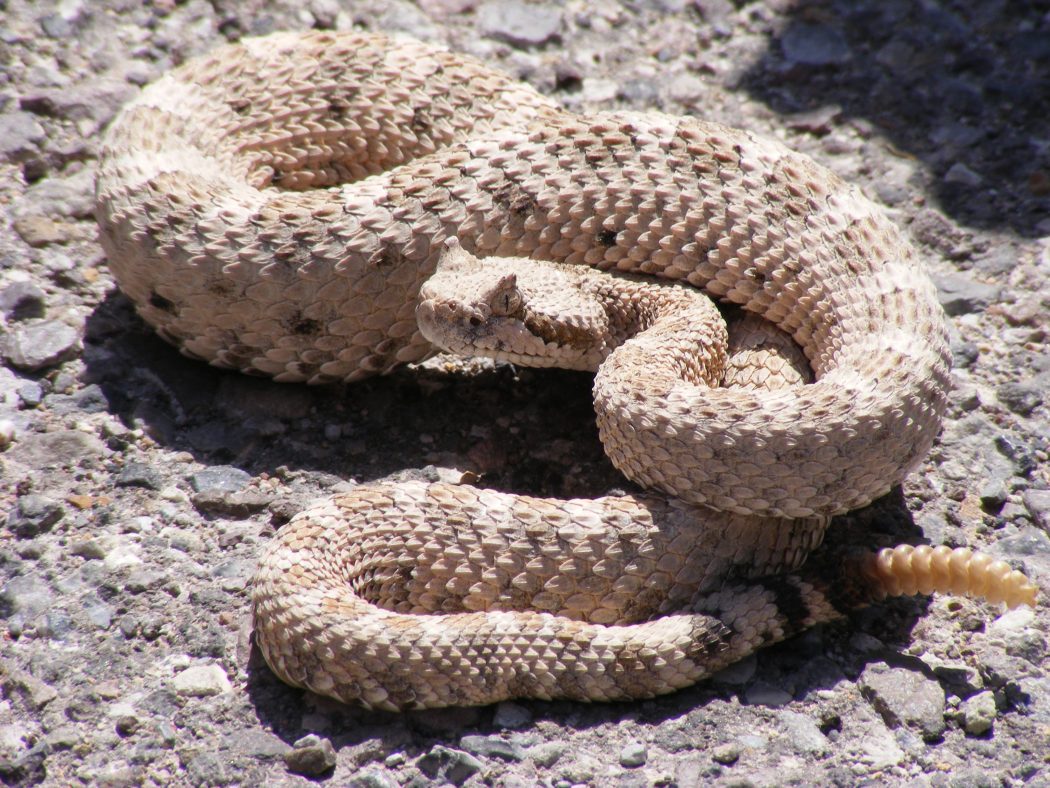Rattlesnakes are a group of venomous snakes classified under the subfamily, Crotalidae [1]. They are characterized by their triangular head, heat-sensing pits, and rattles on their tails. They are indigenous to North America and contribute significantly to the number of venomous snake bites, or envenomations, seen each year. Most victims of rattlesnake envenomation experience pain and swelling at the bite site, but more serious complications, including death, can occur due to the unique mixture of enzymes, metals, and other factors in snake venom [1].
Tissue damage is the most common complication of rattlesnake bites [3]. The hemorrhagic toxins and enzymes in rattlesnake venom can cause tissue necrosis at the site of the bite. Thrombocytopenia can result due to platelet membrane damage caused by the phospholipases in snake venom [3]. Other complications include hypotension, neurotoxicity, and hematologic disorders, such as disseminated intravascular coagulation [2].
Today, most patients with significant bites are treated with antivenom that limits the pathophysiologic abnormalities caused by envenomation. The clinical course and time course of the changes in patients treated with antivenom are well-described in current literature [6]. However, for various reasons, not all patients are treated with antivenom; these reasons include hypersensitivity reactions, cost of treatment, or patient refusal [1]. The clinical course and time course of these untreated patients are not well described in current literature.
My scholarly project aims to understand the clinical course of rattlesnake envenomation and its effect on different physiologic systems in patients who do not receive antivenom [1]. The goal is to identify and understand the clinical course of rattlesnake bite victims who are not treated wit h antivenom. Patient lab values and notable clinical findings will be recorded, and a “Snakebite Severity Score” will be used to quantify the severity of envenomation. I am working with my mentor, Dr. Steven Curry, a renowned toxicologist at Banner University Medical Center – Phoenix. We hope that the results of this study may provide guidance and knowledge for future treatment of rattlesnake bite victims. Such knowledge could assist healthcare providers in anticipating the duration of illness, potential complications, need for transfusions, and time course of hematologic abnormalities, such as thrombocytopenia, hemorrhage, or disseminated intravascular coagulation, that can occur when antivenom is not administered [1].
h antivenom. Patient lab values and notable clinical findings will be recorded, and a “Snakebite Severity Score” will be used to quantify the severity of envenomation. I am working with my mentor, Dr. Steven Curry, a renowned toxicologist at Banner University Medical Center – Phoenix. We hope that the results of this study may provide guidance and knowledge for future treatment of rattlesnake bite victims. Such knowledge could assist healthcare providers in anticipating the duration of illness, potential complications, need for transfusions, and time course of hematologic abnormalities, such as thrombocytopenia, hemorrhage, or disseminated intravascular coagulation, that can occur when antivenom is not administered [1].
Phoebe Chang is a third-year medical student at The University of Arizona College of Medicine – Phoenix. She completed her BS in nutrition science at UC Davis. When she’s not on rotation, you can usually find her exploring the outdoors, petting dogs, or reminiscing with friends about their favorite memories.


